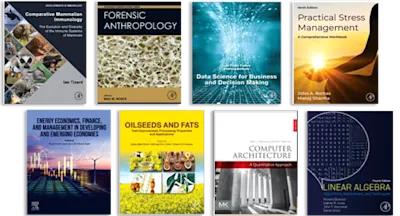
Noninvasive Mechanical Ventilation
- 1st Edition - June 13, 2002
- Imprint: Hanley & Belfus
- Author: John R. Bach
- Language: English
This book describes the use of inspiratory and expiratory muscle aids to prevent the pulmonary complications of lung disease and conditions with muscle weakness. It also describes… Read more
Purchase options

This book describes the use of inspiratory and expiratory muscle aids to prevent the pulmonary complications of lung disease and conditions with muscle weakness. It also describes treatment and rehabilitation interventions specific for patients with these conditions. This book is unique in presenting the use of entirely noninvasive management alternatives to eliminate respiratory morbidity and mortality and avoid the need to resort to tracheostomy for the majority of patients with lung or neuromuscular disease.
- Cost effectiveness of and patient preference for noninvasive ventilation methods are discussed
- Emphasis on quality-of-life issues
- Acute care and home care settings are addressed
- Illustrative case studies amplify the concepts presented
- Comprehensively addresses total care of the patient who needs noninvasive ventilation
- Best available book on the market for managing the patient with neuromuscular weakness
Rehabilitation Specialists, Neurologists, Pulmonologists, Anesthesiologists, Respiratory Therapists, Physical Therapists
1. Disease Profiles of Noninvasive Ventilation Users
2. Physiology and Pathophysiology of Hypoventilation: Ventilatory vs. Oxygenation Impairment
3. The History of Mechanical Ventilation and Respiratory Muscle Aids
4. Noninvasive Ventilation: Mechanisms of Action
5. Noninvasive Ventilation: Mechanism for Inspiratory Muscle Substitution
6. Home Mechanical Ventilation for Neuromuscular Ventilatory Failure: Conventional Approaches and Their Outcomes
7. Noninvasive Respiratory Muscle Aids and Intervention Goals
8. Respiratory Muscle Aids: Patient Evaluation and the Oximetry-Respiratory Aid Protocol
9. Respiratory Muscle Aids: Diagnosis-related Outcomes
10. Noninvasive Ventilation in Pediatrics
11. Noninvasive Ventilation in the Acute Care Setting
12. Home Noninvasive Ventilation for Patients with Lung Disease
13. Chest Physical Therapy: Mucus-mobilizing Techniques 14. Nutrition
15. Illustrative Case Studies of Respiratory Management
2. Physiology and Pathophysiology of Hypoventilation: Ventilatory vs. Oxygenation Impairment
3. The History of Mechanical Ventilation and Respiratory Muscle Aids
4. Noninvasive Ventilation: Mechanisms of Action
5. Noninvasive Ventilation: Mechanism for Inspiratory Muscle Substitution
6. Home Mechanical Ventilation for Neuromuscular Ventilatory Failure: Conventional Approaches and Their Outcomes
7. Noninvasive Respiratory Muscle Aids and Intervention Goals
8. Respiratory Muscle Aids: Patient Evaluation and the Oximetry-Respiratory Aid Protocol
9. Respiratory Muscle Aids: Diagnosis-related Outcomes
10. Noninvasive Ventilation in Pediatrics
11. Noninvasive Ventilation in the Acute Care Setting
12. Home Noninvasive Ventilation for Patients with Lung Disease
13. Chest Physical Therapy: Mucus-mobilizing Techniques 14. Nutrition
15. Illustrative Case Studies of Respiratory Management
- Edition: 1
- Published: June 13, 2002
- Imprint: Hanley & Belfus
- Language: English
JB
John R. Bach
Affiliations and expertise
Professor of Physical Medicine & Rehabilitation, Vice Chairman, Department of Physical Medicine & Rehabilitation, Professor of Neuroscience, Codirector, Jerry Lewis Muscular Dystrophy Association Clinic, UMDNJ--The New Jersey Medical School, Newark, NJRead Noninvasive Mechanical Ventilation on ScienceDirect